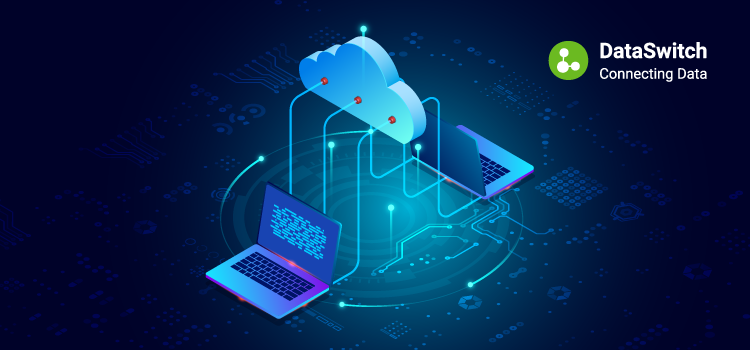
5 Pointers for Data Modernization Success
5 Pointers for Data Modernization Success
With cloud computing rising in popularity and volumes of data growing exponentially, companies are turning to more modern, cloud-friendly platforms for their databases and applications. Studies indicate that by 2022, 75% of databases and 90% of new applications will be in the cloud.
Part of the digital transformation towards cloud computing entails data migration and modernization. This shift enables greater efficiency, agility and scalability. These advantages make data migration and data modernization a critical factor for success and gaining a competitive edge in a range of industries.
However, data modernization and legacy data migration can be complex. Data modernization entails moving data object s(tables, views, triggers and etc.) data and associated process (CRUD [Create, Read, Update and Delete] process, Stored Procedures, ETL pipelines and etc.) ,and so on from one location to a new one. This migration is typically shifting an on-premise workload to a cloud environment or a new physical location.
Here are 5 pointers to ease your data modernization and ensure that it is successful.
1. Define a Roadmap & Expected ROI
Start by setting the objectives of your modernization project. Define a roadmap and expected ROI and establish your strategy and final target. Before commencing the project, work with your IT department and chosen partner for data modernization to clearly define the goal of the migration, specifying criteria and metrics for project success. It’s a good idea to start with analysis of current data objects, data processing workloads and requirements in the modernized environment. Then you can proceed with preparing the data that needs to be migrated. This is still the Assessment phase, and using tools to automate tasks in this phase can ensure a thorough assessment that does not miss any steps.
2. Performance Specifications in the New Environment
Many organizations miss this step, but it is imperative to set some performance specifications for the new environment. To do this requires understanding your current performance profile thoroughly. This necessitates gathering performance statistics and understanding them. Based on this data and understanding, you can set parameters for performance optimization and this is extremely useful with massive datasets. This step can be quite complex, so many organizations opt to work with an experienced partner during this early planning stage of the data modernization project. This ensures the right preparation and proven methodology for successful migration.
3. Re-Model & Re-structure for New Data Environment
Cloud native databases require a new approach of data modeling and structuring. NoSQL databases require complete redesign of schemas from traditional data structure to Hierarchical, Graph, key-value pair and so on. Cloud databases are optimized for Schema-on-Read than Schema-on-Write. This difference has huge implications for scale and performance as you look to migrate to these cloud native, managed database services. Re-Modeling and Re-Structuring is most complex and needs an integrated team who know the best of both worlds, best practices and guidelines. Don’t forget, schema changes have a tsunami ripple effect. There is a need to migrate the data in to the re-designed schema and corresponding scripts need to be converted to target technology and adjusted as per the new data design without compromising accuracy and performance. It’s a very complex, time-consuming and effort-intensive exercise. An automated tool driven approach will accelerate the value realization.
4. Effective Cost-Planning
Don’t forget to plan for costs. You must determine the cost of running your application in its new environment. While migration to a modern cloud environment typically reduces costs, cost planning is still important. It ensures that the project does not get hindered by inaccurate forecasts or project plans. Remember that for a certain window of time, the new system may be running alongside the legacy solution and this can spike operational costs by 100%. However, after the migration is completed, most companies benefit from a massive 300% ROI. So be prepared for this initial surge in operational costs that pays off in the long run.
5. Pinpoint Outdated Software & Data to Migrate
It can be hard to leave your legacy systems behind, but migrating to a modern, cloud-friendly database will give your organization a competitive edge with the best capabilities and performance. An experienced partner can help you identify your outdated software and what needs to migrate, with a data-specific roadmap that details what is being migrated. Proven methodologies can help simplify and optimize the entire process, with thorough details of all data and workloads to migrate.
Many companies have turned to powerful, automated data migration and modernization solutions to minimize the risks and challenges of data and data modernization. This has numerous benefits – it reduces the time frame of the project, eliminating error-prone manual effort using proven best practices to get the project over the finish line with lower costs.
You can count on DataSwitch for cost-effective, accelerated solutions for digital data transformation, migration and modernization through MongoDB. Our no code and low code solutions along with enhanced automation, cloud data expertise and unique, automated schema generation accelerates time to market.
DataSwitch provides Intuitive, Predictive and Self-Serviceable Schema redesign from traditional model to Modern Model with built in best practices, as well as fully automated data migration & transformation based on redesigned schema and no-touch code conversion from legacy data scripts to modern equivalent
Get your enterprise’s cloud-driven data and workload modernization journey and legacy app migration running at light speed with business continuity ensured. Book a demo to know more.



